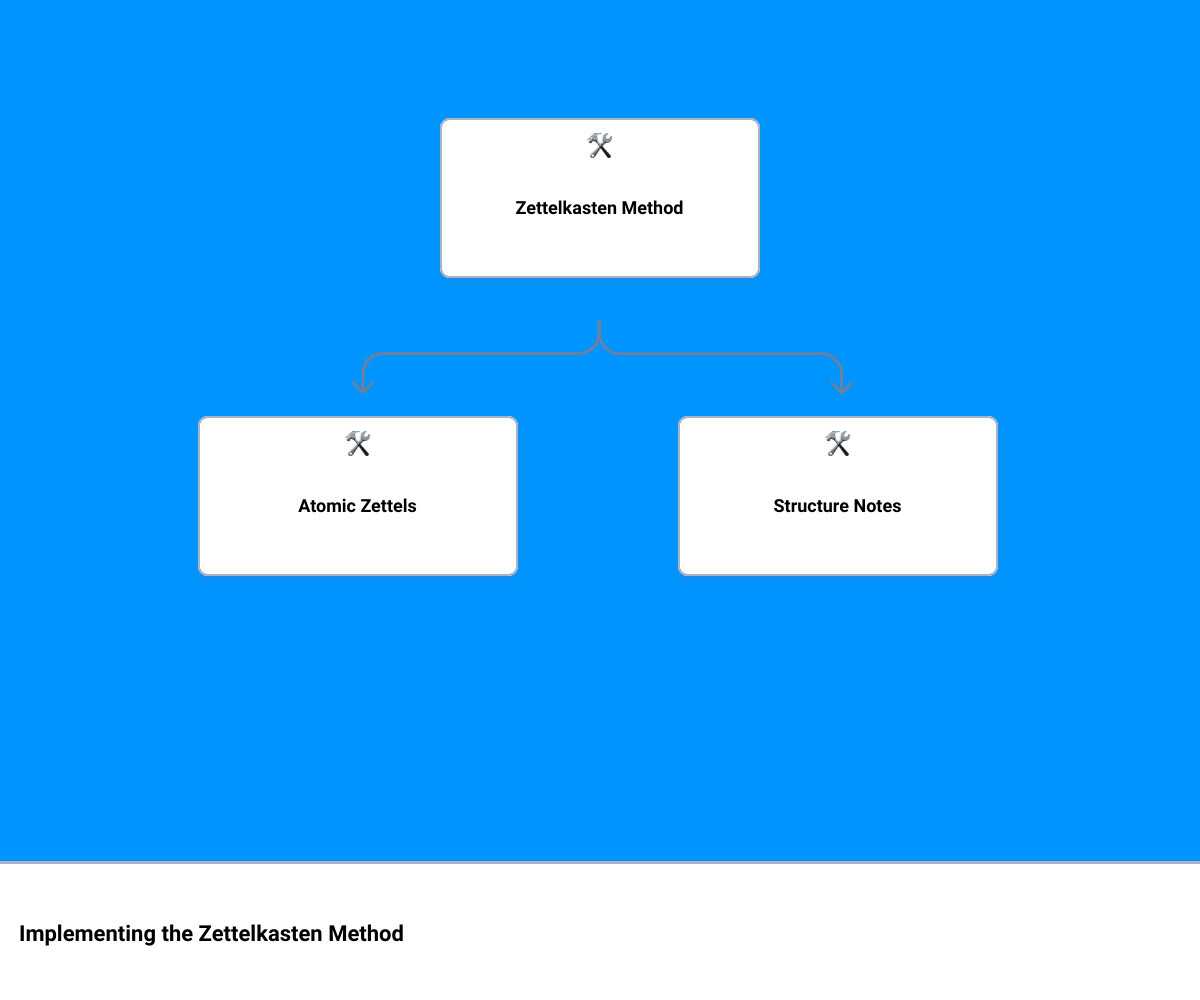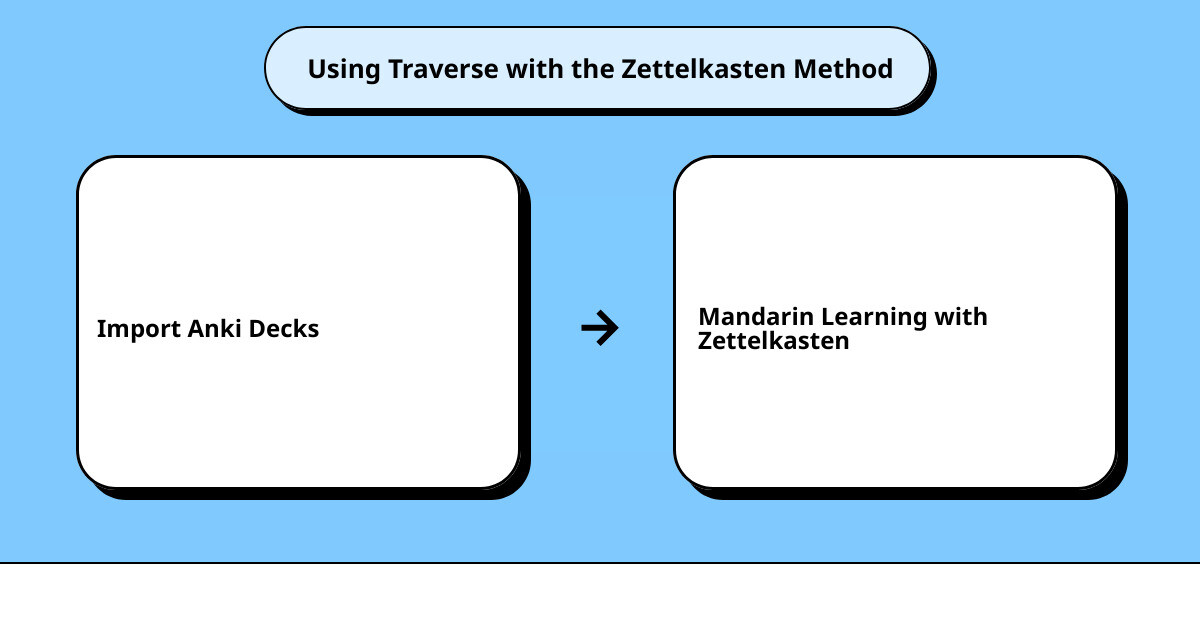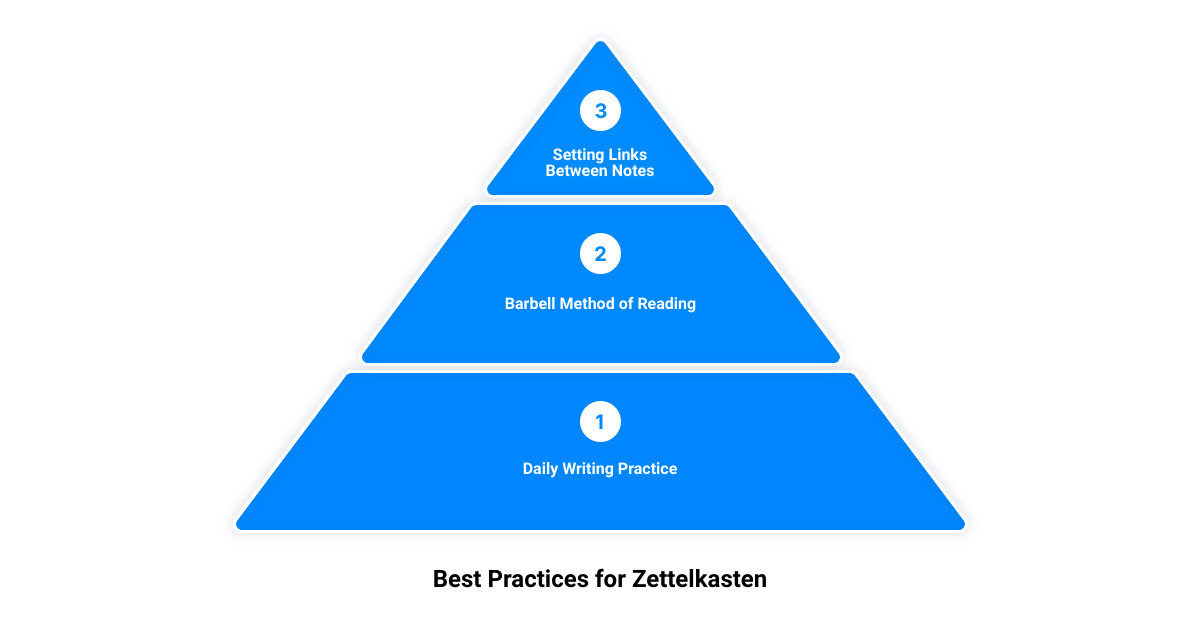Introduction to Zettelkasten Notes System
In an era of information overload, finding a way to effectively manage knowledge can feel like searching for a needle in a haystack. But what if there was a proven method that could help you not only organize your thoughts but also enhance your creativity, improve thinking skills, and boost your productivity? Welcome to the world of Zettelkasten notes system, a powerful tool for personal knowledge management that can revolutionize your learning journey.
Originally devised by the prolific German sociologist Niklas Luhmann, the Zettelkasten system has gained traction among lifelong learners, researchers, and writers around the globe. Its unique approach to note-taking involves breaking down complex ideas into smaller, manageable chunks, or "Zettels", and then linking these notes in a way that mirrors the non-linear nature of our thinking process.
So, whether you're a Mandarin language enthusiast seeking an effective way to learn Chinese characters, or a lifelong learner exploring science-backed methods for effective learning, the Zettelkasten method holds tremendous potential. This article will delve into the nuts and bolts of the Zettelkasten notes system, illustrate how to implement it in your learning journey, and show you how it can be effectively used with the Traverse learning app. Get ready to unleash your productivity and master the art of Zettelkasten notes.
Understanding the Zettelkasten Method
Let's dive into the fascinating world of the Zettelkasten method, a strategic system for thinking, learning, and writing that can radically transform your productivity and knowledge management.
The Origin and History of the Zettelkasten Method
The Zettelkasten method was invented by Niklas Luhmann, a prolific German sociologist who produced an astonishing 70 books and 400 scholarly articles during his career. Luhmann attributed his exceptional productivity to his unique note-taking system, which he called his "second brain". This method revolved around a wooden box filled with index cards, each card, or "Zettel", contained an idea or piece of information. But what truly set this system apart was the network of connections between these cards, enabling Luhmann to weave together complex theories and concepts.
The Principles of the Zettelkasten Method
At the heart of the Zettelkasten method are two key principles: atomicity and connectivity. The principle of atomicity dictates that each note should focus on a single idea or piece of information, making it easier to link and combine them in various ways. The principle of connectivity emphasizes the importance of creating links between notes, enabling you to form a web of interconnected thoughts and ideas.
Unlike traditional note-taking methods that often result in forgotten or lost information, the Zettelkasten method allows for systematic organization and easy retrieval of information, even years later. The method encourages you to actively engage with your notes, forming connections between disparate pieces of information and sparking new insights.
The Purpose of Note-Taking in the Zettelkasten Method
In the Zettelkasten method, note-taking serves a dual purpose. Firstly, it allows you to capture and store information in a structured and organized way, drastically reducing the risk of information overload. Secondly, and perhaps more importantly, it aids in memory recall and knowledge retention. The process of actively engaging with your notes and forming connections between them mirrors the way our brains naturally work, leading to a deeper understanding of the subject matter.
Whether you're learning Mandarin, studying cognitive science, or simply trying to manage the relentless influx of information in today's digital world, the Zettelkasten method can be a powerful tool in your lifelong learning journey.

Implementing the Zettelkasten Method
Unleashing your productivity starts with understanding how to effectively implement the Zettelkasten method. Let's dive into the key components of this system and how they help in organizing and connecting our thoughts for efficient learning.
The Role of Atomic Zettels in the Zettelkasten Method
In the heart of the Zettelkasten system are the atomic Zettels, the smallest units of ideas. Each note contains a single, standalone idea, making it easier to link and cross-reference with other notes. This principle of atomicity is essential in maintaining the flexibility and adaptability of your Zettelkasten. By keeping our Zettels atomic, we ensure they are not confined to any rigid structure. This allows our ideas to freely connect with others, even loosely related ones, fostering a dynamic web of knowledge that constantly evolves with our learning.
The Importance of Links Between Zettels
Links are the veins of the Zettelkasten system, connecting ideas to form an intricate network of knowledge. They serve as checkpoints of our thought process, allowing us to store and continue our train of thoughts later. The magic of links is that they free up our working memory, allowing us to focus on developing ideas rather than remembering them. However, remember that links themselves do not carry meaning. They are simply shortcuts to other notes. Therefore, it's crucial to include the reason for the link or how the notes are related, ensuring that the connection between the notes maintains its context and relevance.
The Use of Structure Notes in Organizing the Zettelkasten
Structure notes, also referred to as Index or Hub notes, serve as the roadmap of your Zettelkasten. They provide a high-level overview of your notes, helping you to navigate through this knowledge web. Imagine these structure notes as signposts, guiding you to the bigger picture and making connections between different topics. By acting as your Zettelkasten's table of contents, they help you maintain an organized and accessible system without imposing a rigid hierarchy.
The Use of Special Tags in the Zettelkasten Method
Finally, to add a touch of centrality amidst the decentralization of the Zettelkasten method, we use tags and keywords. These special tags serve as an additional layer of organization, making it easier to group related notes. However, unlike traditional hierarchies, they don't impose a rigid structure. They simply provide another way to connect and navigate through your notes, further enhancing the efficiency and usability of your Zettelkasten.
Implementing the Zettelkasten method is about more than just note-taking. It's about creating a personal knowledge management system that mirrors how your brain naturally works, leading to more effective learning and productivity. So whether you're mastering Mandarin or deep-diving into the cognitive sciences, the Zettelkasten method can be your secret weapon for lifelong learning.

The Zettelkasten Method and Traverse Learning App
If you're on a mission to master Mandarin or any other complex topic, the Zettelkasten method and the Traverse learning app are the powerful duo you need. Traverse is a comprehensive learning tool, integrating the principles of the Zettelkasten method to supercharge your learning journey.
How Traverse Supports the Zettelkasten Method
The synergy between Traverse and the Zettelkasten method is a game-changer for lifelong learners. Traverse seamlessly integrates the four types of Zettelkasten notes - fleeting, literature, permanent, and index or structure notes - into a user-friendly interface. This combination allows you to create atomic notes, which are brief, clear, and easy to navigate. Atomic notes are a central concept to the Zettelkasten method as each note contains one main idea.
The Traverse app also enables you to create connections between your notes. This is a crucial aspect of the Zettelkasten method as it helps to create a web of information that’s more manageable and easier to navigate. Plus, Traverse's visually organized mind mapping tool allows you to express your thoughts and learnings in a vibrant, colorful manner.
Importing Anki Decks into Traverse for Zettelkasten Notes
One standout feature of the Traverse app is its 100% compatibility with Anki, a popular flashcard app. You can import your Anki decks into Traverse, including scheduling information, media, and image occlusions. This feature is a boon for learners transitioning from Anki, as they can continue their learning process without any disruption. This seamless integration preserves the familiarity and comfort of your Anki flashcards while leveraging the powerful features of Traverse.
Using Traverse for Mandarin Learning with Zettelkasten Notes
If you're learning Mandarin, the combination of the Zettelkasten method and the Traverse app can be your steadfast companion. By systematically organizing your learning materials and actively engaging with them, you'll find yourself speaking Mandarin Chinese with confidence and fluency in no time. By linking related ideas, regularly reviewing your notes, and creating a personalized web of knowledge that is easy to navigate, you'll elevate your learning approach, helping you digest complex information and connect ideas in new and fascinating ways.
Remember, the true power of the Zettelkasten method and the Traverse app lies in their flexibility and adaptability. They're not merely for Mandarin learning; they can be applied to any subject or field of interest. So, continue to experiment, refine your note-taking process, and watch your personal knowledge base expand.

The Benefits of the Zettelkasten Method
Your mind is a garden of ideas, and the Zettelkasten method is the key to cultivating that garden. This unique approach to note-taking and knowledge management doesn't just store your thoughts—it helps them grow.
Enhancing Creativity and Idea Generation with the Zettelkasten Method
The Zettelkasten method acts as a catalyst for your creativity. Unlike traditional note-taking systems that can become jumbled messes of disjointed thoughts, the Zettelkasten method encourages interlinking of ideas. Each note you make is a standalone idea, but it doesn't exist in isolation. By linking different notes, you create a dynamic network of interconnected thoughts. This network mirrors the way our brain naturally works, promoting a more profound understanding of the topics at hand and leading to innovative idea generation.
Improving Thinking Skills with the Zettelkasten Method
The Zettelkasten method is not just about collecting and storing information—it's about refining your thinking skills. As you break down complex concepts into bite-sized notes and link them together, you train your brain to see patterns and make connections between different pieces of information. This process not only develops your cognitive skills but also amplifies memory recall. By understanding how your mind works, you can work your mind better, as Jim Kwik, mind coach and author of Mindvalley’s Superbrain Program, puts it.
The Zettelkasten Method for Effective Knowledge Management
The Zettelkasten method is a powerful tool for knowledge management. By systematically organizing information in a way that resonates with your thinking, you can easily retrieve knowledge, even years later. This approach is especially beneficial when learning complex subjects, like Mandarin. With the Zettelkasten method, you can break down the vast array of Chinese characters and grammar rules into manageable notes, making it easier to remember and apply them.
Moreover, research from the University of California found that using a digital note-taking system like the Zettelkasten can lead to a 30% increase in productivity and time savings. This means less time spent searching for information and more time for actual learning and applying knowledge.
In a nutshell, the Zettelkasten method isn't just an organizational tool—it's a strategy for enhancing creativity, improving cognitive skills, and managing knowledge effectively. So why wait? Start making your Zettelkasten notes today and experience the transformation in your learning process.

Tips and Best Practices for Using the Zettelkasten Method
The Zettelkasten method can be a game-changer for your learning and knowledge management. However, to reap these benefits, you need to understand and apply it correctly. Here are some tips and best practices to help you master the art of Zettelkasten notes.
Creating a Daily Writing Practice with Zettelkasten Notes
Regular interaction with your Zettelkasten is crucial for maintaining its vitality and usefulness. Make it a habit to write daily, even if it's just a single note. This practice will not only help you keep your Zettelkasten updated but also reinforce your learning and knowledge retention.
When writing, remember to add your own thoughts and interpretations, not just raw information. This helps you to engage more deeply with the material and encourages critical thinking. Remember, the Zettelkasten method isn't about storing information - it's about building knowledge.
Using the Barbell Method of Reading for Zettelkasten Notes
The Barbell Method of reading is a strategy that works well with the Zettelkasten method. This approach involves reading both very easy and very challenging materials, avoiding the mediocre middle. The easy materials provide quick wins and reinforce existing knowledge, while the challenging materials push your understanding and help generate new insights.
When implementing the Barbell Method, it's important to take notes effectively. Capture fleeting ideas quickly and create atomic evergreen notes to ensure your Zettelkasten remains organized and effective. This approach will ensure that you get the most out of your reading and learning efforts.
Setting Links Between Notes for Effective Zettelkasten Notes
One of the key components of the Zettelkasten method is creating links between notes. This process helps to create a web of knowledge, where you can see patterns and relationships that you might not have initially noticed.
To effectively link your notes, consider using tags, keywords, or cross-referencing. This process will allow you to quickly and easily find related notes within your Zettelkasten. Remember to label your links to clarify the relationship between the notes and use groups or tags to group related notes together.
In conclusion, mastering the Zettelkasten method requires consistent practice and thoughtful engagement with your notes. By writing regularly, using effective reading strategies, and linking your notes, you can create an interconnected web of knowledge that enhances your learning and productivity.
Conclusion: Mastering the Art of Zettelkasten Notes for Enhanced Productivity
Mastering the Zettelkasten method is akin to unlocking a superpower for your brain. It's not just about taking notes; it's about creating a dynamic, interconnected web of knowledge that continuously grows and evolves with you. By effectively utilizing this method, you can foster a deeper understanding of complex topics, accelerate your learning process, and enhance your productivity.
The use of the Zettelkasten method in conjunction with the Traverse app offers a robust and efficient approach to learning, particularly for complex subjects such as Mandarin. With its unique features, such as the ability to import Anki decks, Traverse can transform your Zettelkasten notes into a vibrant mind map, allowing you to visualize and navigate through your knowledge with ease.
But remember, the power of the Zettelkasten method lies in its consistent usage. Cultivate a daily writing practice, engage with your notes regularly, and don't shy away from building numerous links between your Zettels. As you continue this practice, you'll start to notice patterns and connections you may have previously overlooked, leading to fresh insights and deeper comprehension.
Moreover, the Zettelkasten method isn't a rigid system. It's flexible and adaptable, allowing you to tailor it to your specific learning style and needs. So, feel free to experiment with different strategies, like the Barbell method of reading, to see what works best for you.
In the end, the Zettelkasten method is more than a note-taking system. It's a way of honing your thinking skills, cultivating your creativity, and managing your knowledge effectively. So, dive in, start creating your Zettelkasten notes, and unleash your productivity like never before. Happy learning!

